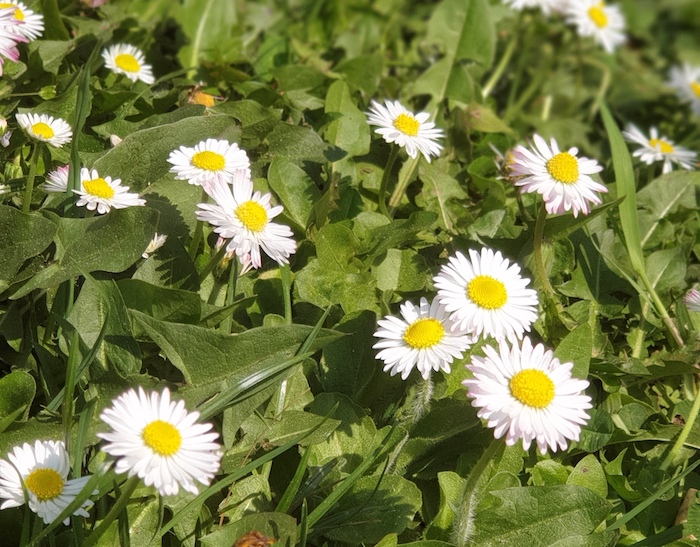What to do with daisies?
If you follow me on Instagram, you may or may not have noticed that I went a little overboard with edible wild plants. Quite a few people even asked me to write a blog post about them but since it’s a never-ending list I would have to update regularly, I thought it would be easier for everyone to focus on a few plants anyone can use. I am however leaving all the other ones in my stories highlights. So let’s start with what to do with daisies.
I need to admit I hesitated between daisies and dandelion for this post but then I figured I should write about daisies because they are the easiest to harvest and the most underrated of the two. We often forget that lawn daisies have medicinal properties. In fact we use them since antiquity to treat various ailments. They are rich in saponins, flavonoids, essential oils, mucilage and many other components that make them anti-inflammatory, antibacterial, diuretic, expectorant and febrifuge. I’ll skip the science but in short, they are good for you and there’s a lot you can do with them.
Before anything, there are a few things you must remember whenever you harvest wild plants. Most importantly, only use plants you have clearly identified. Besides, they need to be free from pollutants or animal droppings and you will have to clean them. I usually soak mine in vinegar water and rinse them a few times. Last but not least, harvest responsibly. Take only what you need and be careful not to destroy their habitat. The bees need them more than we do.
Now let’s get back to our daisies.
Daisies can be eaten fresh
Both the leaves and the flowers can be used to pimp a salad or decorate your smoothie bowl. They taste rather neutral, sometimes a little bitter but nothing overpowering. You can also choose to cook the leaves like leafy greens, make spreads or pesto.
They make great capers
For that, you will need to pickle the flower buds only. Once you’ve washed them very well, put them in a clean jar with the spices of you choice like bayleaf, coriander seeds or peppercorns. Boil some white vinegar with salt (about 1 teaspoon for 150ml) and fill the jar while it’s still hot. Close the lid and turn upside down to seal it. Let the buds marinate for at least a week.
They can be used to make tea
After you have harvested the daisies, clean them well and place them on a washcloth, forming a thin layer. The fastest way to dry them is to leave them in the hot sun for a day but you can also do it in the oven or at room temperature but it might take a few days. Once completely dry, the flowers can be stored in a jar and used. That tea is great when you have a cold.
Daisies make a great toner
Boil two cups of water with two tablespoons of dried daisies for 10 minutes. Pour in a clean bottle and let it cool. Use like your regular toner for up to a week.
And finally, you can make face oil with daisies
Lawn daisies are good for all skin types. You just gotta make sure you’re using the right oil for you. Let’s say jojoba for oily skin, nigella for acne-prone skin, almond for dry skin, argan for normal skin, avocado for sensitive and prickly pear for mature skin. In all cases, fill two thirds of a small container with dried flowers (or a bit more if you’re using fresh flowers) and complete with oil. Place the lid on but don’t close it completely so the mixture can breathe. Let it sit somewhere warm and sunny (but not direct sunlight) for at least three weeks.






